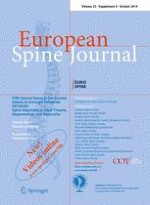01-10-2014 | Original Article
Sitting imbalance cause and consequence of post-traumatic Charcot spine in paraplegic patients
Published in: European Spine Journal | Special Issue 6/2014
Login to get accessAbstract
Purpose
To analyze the role of spine alignment in post-traumatic paraplegic patient as a potential cause of late Charcot spine disease (CSD).
Method
A retrospective review of three cases in which the disease appeared more than 15 years after a spinal cord injury treated by posterior fusion. A review of the literature concerning spine balance in sitting position, especially referred to paraplegic patients, is done to validate this hypothesis.
Results
Lumbar kyphosis in paraplegic patients during the sitting position may increase the mechanical load on disks and ligament below the previously fused area. This phenomenon, in combination with lack of protective mechanism because of poor muscular support and lack of sensitivity can speed up and amplify the normal degenerative changes in the disk and ligaments.
Conclusions
More investigations are required to fully understand all the mechanisms underlying CSD pathogenesis to prevent it. Until then, a systematic long-term clinical and radiological follow-up in all post-trauma paraplegic patients is suggested. Combined anterior and posterior fusion, when feasible, can restore the sagittal balance providing a better quality of life in these patients.





